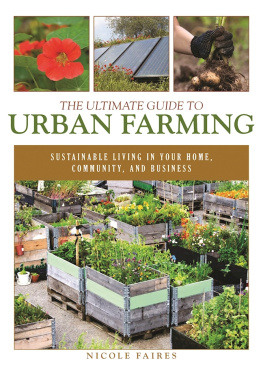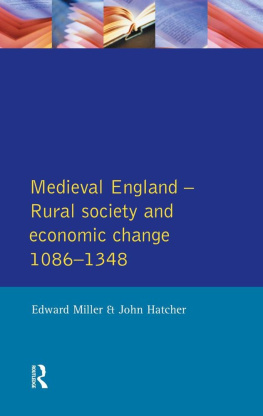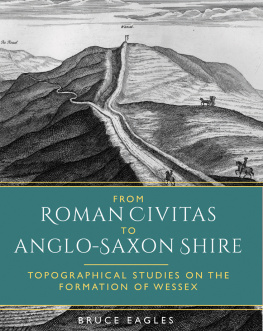
Previous titles in this series
Volume 1: A Hertfordshire demesne of Westminster Abbey: Profits, productivity and weather by
Derek Vincent Stern (edited and with an introduction by Christopher Thornton)
(ISBN 978-1-900458-92-7)
Volume 2: From Hellgill to Bridge End: Aspects of economic and social change in the Upper Eden
Valley, 184095 by Margaret Shepherd
(ISBN 978-1-902806-32-7, 18.95 pb)
Volume 3: Cambridge and its Economic Region, 14501560 by John S. Lee
(ISBN 978-1-902806-47-1, 35.00 hb; ISBN 978-1-902806-52-5, 18.99 pb)
Volume 4: Cultural Transition in the Chilterns and Essex Region, 350 AD to 650 AD by John T.
Baker
(ISBN 978-1-902806-46-4, 35.00 hb; ISBN 978-1-902806-53-2, 18.99 pb)
Volume 5: A Pleasing Prospect: Society and culture in eighteenth-century Colchester by Shani
DCruze
(ISBN 978-1-902806-72-3, 35.00 hb; ISBN 978-1-902806-73-0, 18.99 pb)
Volume 6: Agriculture and Rural Society after the Black Death: Common themes and regional
variations by Ben Dodds and Richard Britnell
(ISBN 978-1-902806-78-5, 35.00 hb; ISBN 978-1-902806-79-2, 18.99 pb)
Volume 7: A Lost Frontier Revealed: Regional separation in the East Midlands by Alan Fox
(ISBN 978-1-902806-96-9, 35.00 hb; ISBN 978-1-902806-97-6, 18.99 pb)
Volume 8: Land and Family: Trends and local variations in the peasant land market on the
Winchester bishopric estates, 1263-1415 by John Mullan and Richard Britnell
(ISBN 978-1-902806-94-5, 35.00 hb; ISBN 978-1-902806-95-2, 18.99 pb)
Volume 9: Out of the Hay and into the Hops: Hop cultivation in Wealden Kent and hop
marketing in Southwark, 17442000 by Celia Cordle
(ISBN 978-1-907396-03-8, 35.00 hb; ISBN 978-1-907396-04-5, 18.99 pb)

First published in Great Britain in 2011 by
University of Hertfordshire Press
College Lane
Hatfield
Hertfordshire
AL10 9AB
UK
John Hare 2011
The right of John Hare to be identified as the author of this work has been asserted by him in accordance with the Copyright, Designs and Patents Act 1988.
All rights reserved. No part of this book may be reproduced or utilised in any form or by any means, electronic or mechanical, including photocopying, recording or by any information storage and retrieval system, without permission in writing from the publisher.
British Library Cataloguing in Publication Data
A catalogue record for this book is available from the British Library
ISBN 978-1-902806-84-6 hardback
ISBN 978-1-902806-85-3 paperback
Design by Geoff Green Book Design, CB4 5RA
Printed in Great Britain by Henry Ling Ltd, DT1 1HD
In Memoriam
ARNOLD HARE (192199)
SYBIL HARE (191987)
Publication grant
Publication has been made possible by a generous grant from the Marc Fitch Fund
Acknowledgements
This book seeks to examine an important period of English development through a manageable, albeit artificial, unit: the county. It seeks to explore some of the differences in late medieval society between town and country, agriculture and industry, and through regional and short-term fluctuations. The research began long ago in preparation for my thesis. It was put aside in deference to other pressures and projects, and a career teaching very different types of history, before being resumed in middle age.
Over the years many people have contributed to this book in a variety of ways, answering queries, commenting on earlier articles, or on seminar papers and lectures, or just providing scholarly encouragement. I would particularly like to thank Tony Bridbury, Richard Britnell, Bruce Campbell, Barrie Dobson, Peter Fowler, Winifred Harwood, Michael Hicks, Guy Lytle, Pamela Nightingale, Mark Page, Edward Roberts, the late Simon Walker, Chris Woolgar and Margaret Yates, for a variety of help and I apologise to any whom I have inadvertently overlooked. Three scholars deserve special mention. The late Rees Davies introduced me to the academic study of Medieval History and left me with a clear sense that the study of ones homeland could be a suitable foundation from which to explore the wider world of the period. The late Robin Du Boulay supervised my thesis and enriched my study of the period. Chris Dyer came in at a later stage but greatly improved the final text, and his support was particularly appreciated at a time of difficulty for the book. Sadly the passing of time means that the dedication to my father and mother has become an in memoriam.
I wish to express my thanks to the various owners and archivists upon whom studies like this depend. The Duke of Beaufort and the Earl of Pembroke, Kings College Cambridge, Magdalen, Merton and New Colleges at Oxford, the Dean and Chapters of Winchester and of Salisbury, and Winchester College all provided access to their archives. I have drawn heavily on the British Library, the National Archives, Wiltshire and Swindon Archives and the Hampshire Record Offices, as well as briefer visits to many other collections. I would particularly like to acknowledge the debt that we all as scholars owe to the tireless work of the archivists who here must remain nameless. In a time of such difficulties in the public sector, it is important to emphasise how much we owe to them.
I am grateful to the Social Science Research Council who funded my thesis and thus much of the original research. During my career I have had two periods of extended study: a term as schoolteacher fellow at Liverpool, thanks to the University and to Hampshire County Council, and later a school teacher studentship at Merton College Oxford followed by a period of unpaid leave during which the bulk of the book was written. Thanks are also due to the University of Southampton (and the Hartley fellowship), King Alfreds College, now the University of Winchester, and Peter Symonds College.
I am grateful to Nigel Goose and the University of Hertfordshire Press for finding a home for this book. At the Press, Sarah Elvins has carried this through to publication. At various earlier stages parts of the text were edited by Tracy Wallace, Christine Linehan and Eileen Power. The whole text was then edited for the Press by Sarah Harrison. The maps were drawn by Nathalie Barret. To all I offer my thanks.
Winchester, February 2011
Studies in Regional and Local History
General Editors preface
In volume ten of Studies in Regional and Local History we return to late medieval England, the period that has featured so prominently among the volumes published in this series to date. In my preface to volume one of Studies I drew attention to the importance of the medievalist in the development of English local history, for regional and local research has been central to medieval studies since the end of the nineteenth century, with historians such as Maitland and Vinogradoff endowing it with academic respectability. From 1899 the early volumes of the Victoria County History exhibited a very heavy emphasis indeed upon the medieval period, while subsequently scholars such as Ephraim Lipson and M.M. Postan transformed medieval studiesin terms of content, depth of analysis and analytical rigour. In Postans work we find not only a new demographic model of English economic development that served as a profound stimulus to further research, but also a clear appreciation of the great variety of manorial economies that existed, whether governed by antiquity, size and type of ownership or by geographical location, an appreciation that perhaps reached its apogee when Postans disciple, John Hatcher, demonstrated that Cornwalls manors lacked most of the features hitherto viewed as central to manorialism, while the countys highly diversified economy gave it advantages lacking in most other counties in the face of the demographic and agricultural depression of the fifteenth century. Writing in 1969, Hatcher could already claim that it was now fully appreciated that the multitude of differing cultural, topographical, climatic, economic, and political conditions present in England in the Middle Ages led to the formation of a multitude of manorial structures each one differing in some way from the classical manor. Since then, of course, numerous regional and local studies have appeared that have shed further light upon the variety of economic and social forms that coexisted in medieval England, the very best of them incorporating a dialogue between appreciation of common themes and regional differences, as Britnell and Dodds demonstrated so powerfully in Volume 6 of the present series.









